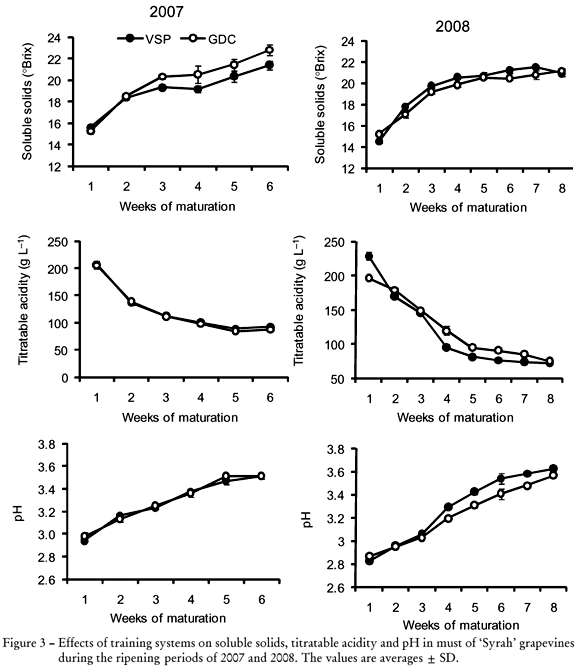Plant architecture and its interaction with agricultural practices and environmental constraints is determinant for grapevine canopy structure, which is related to carbon assimilation, bud fertility and fruit quality. In this context, this study evaluated the performance of field-grown 'Syrah' grapevines conducted by two management systems: Vertical Shoot Position (VSP) or a modified Geneva Double Curtain (GDC), in Pirapora, state of Minas Gerais, Brazil, during the winters of 2007 and 2008. The evaluations of leaf area, water relations and net CO2 assimilation were made at the end of the ripening period. Yield per vine and per hectare were estimated and mean berry weight and diameter, total soluble solids, pH and titratable acidity were evaluated during berry ripening. The grapevines trained in VSP had higher water status as compared to GDC, shown by differences in pre-dawn leaf water potential (ψpd) and stem water potential (ψstem). However, the CO2 assimilation was similar in both training systems. Fruit exposure was higher in VSP than in GDC, which contributed to increasing berry temperature. At harvest, the berries in GDC reached values near to 23 ºBrix whereas berries in VSP showed values near 21 ºBrix.
CO2 assimilation; canopy management; water potential; berry temperature; fruit quality





